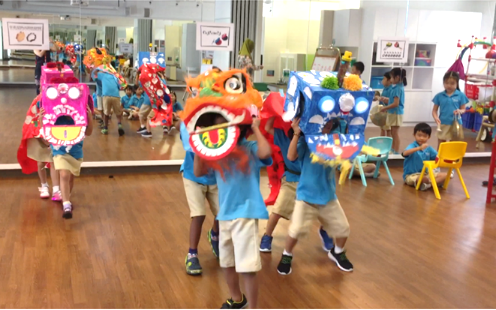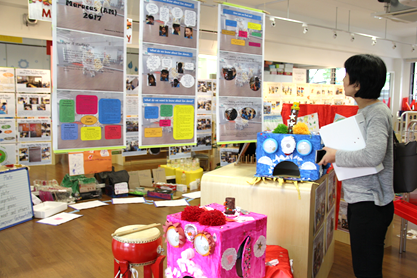Overview
During the Lunar New Year season, the K2 children watched a lion dance performance. This experience got the children curious and they embarked on a project to find out more about lion dance. In the process, the children were given opportunities to interview members from a lion dance troupe, brainstorm and express ideas about how they should create their lion dance costumes, and learn how to work well in small groups to put up a lion dance performance together.
#1 Using the K-W-L chart to organise children's thoughts
First, the children were engaged in a discussion about lion dance. A K-W-L chart was used to organise children’s thoughts and ideas during the process. As children offered their ideas and thoughts, their names were indicated to show that their contributions were valued. It captured what the children already knew and also guided them in finding out what they want to know. In this inquiry, they wanted to explore making their own lion dance costumes and find out how to create the lion’s movements (see the ‘W’ chart below).
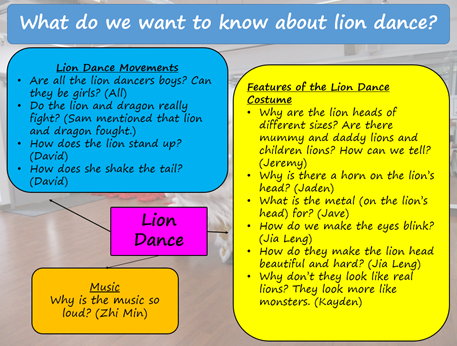
#2 Gathering information through videos and a lion dance troupe visit
As the children watched a video clip on lion dance, the teacher modelled a sense of wonder and curiosity by prompting them with the following questions:
- Look at the eyes of the lion, what do you observe? Look at its tail. I wonder how the dancers make the eyes blink and the tail wag.
- I wonder if this is a male or a female lion. How can you tell?
- What do you think the lion head costume is made of? What makes you say that?
As suggested by the children, a lion dance troupe was invited to the centre to share with the children more about the dance. The children were encouraged to write their questions on slips of paper using invented and conventional spelling so that they could remember their questions when the troupe came. The teacher facilitated this process by going through possible questions to ask and providing question stems for the children to complete. For words that the children were not confident in spelling, the teacher would model the process by helping the children to sound out the words and encouraging them to use letters or groups of letters to represent the sounds they heard.
The
lion dance troupe brought in four lion dancers and two musicians to the
kindergarten to perform for the children. Besides the performance, the troupe
also shared with the children the history of the Chinese lion dance. The
children were also given opportunities to ask the troupe questions they had
prepared earlier.
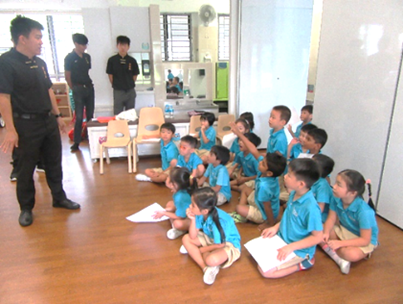
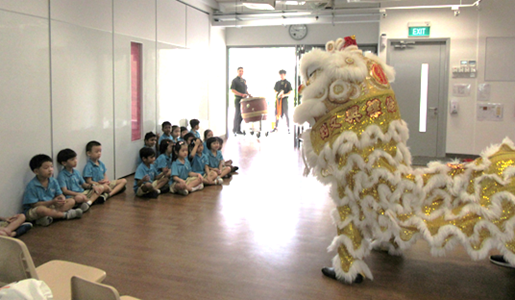
Towards the end of the session, the children explored the adult-sized lion dance costume and the drum and cymbals. They pretended to be the musicians and dancers of the lion dance troupe.
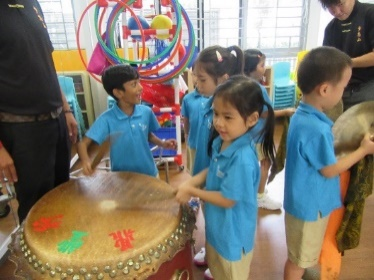
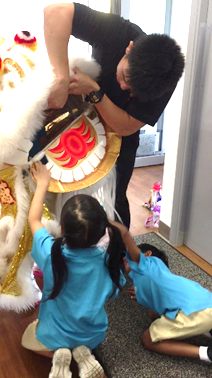
After the session, the children shared some of their observations:
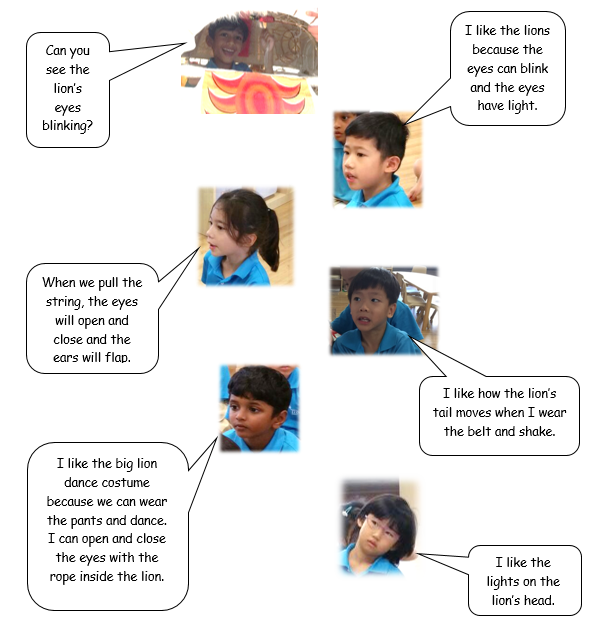
#3 Documenting their findings
To reflect on their
learning experience with the lion dance troupe, the children revisited the K-W-L
chart to see if they have found out the answers to their questions. The children then recorded their findings on
the K-W-L chart, as shown in the picture below:
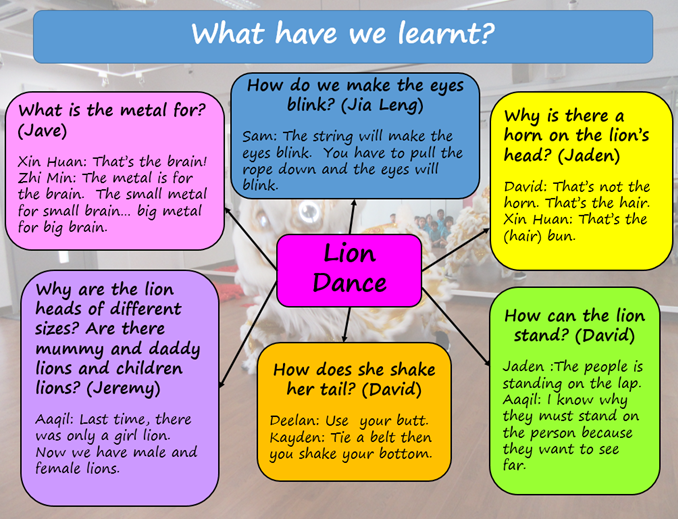
#4 Presenting their findings
- Why do you think wood/ plastic/ paper is a good material?
- What makes you say that?
| Sam: | Wood…because it is strong. |
| Kayden: | It is not a good idea because it cannot be bent. It cannot make into the shape. We need to use cardboard. |
| Zhi Min: | Clay…because it is soft to mould. When it dries, it becomes hard. |
| Jia Leng: | Rock is better because it is hard. |
| Zhi Min: | But heavy. |
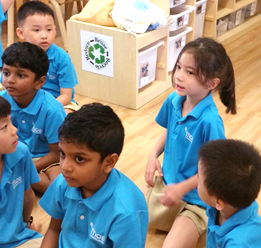 | 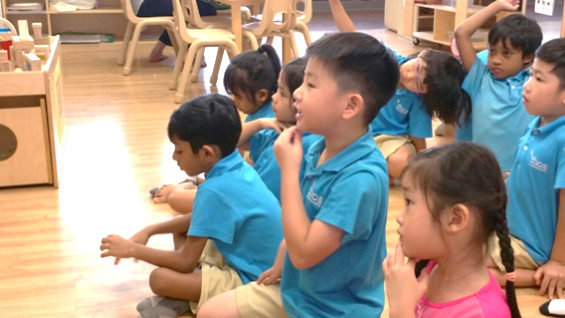 |
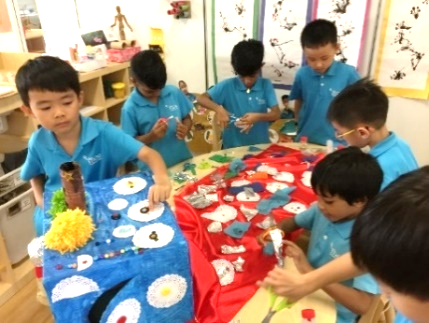 | 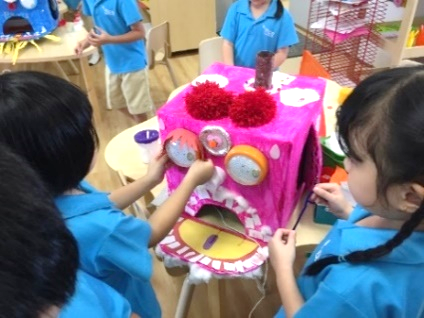 | 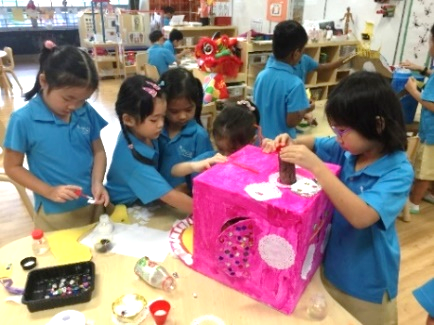 |
After making their costumes, the children started preparing for their performance. Based on their learning experience with the lion dance troupe, they discussed the different types of characters and instruments that would be included in their performance. They picked the gong, cymbal and the drums. The children chose and negotiated with each other the roles they would like to play, i.e., musicians or lion dancers.
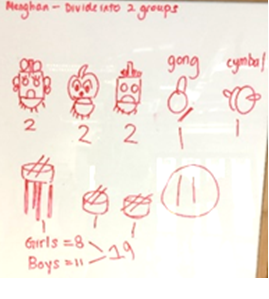 | 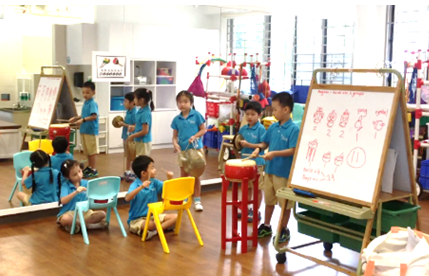 | 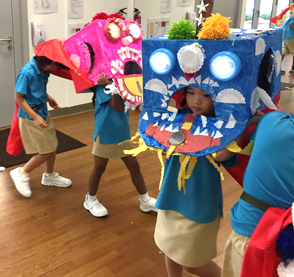 |
